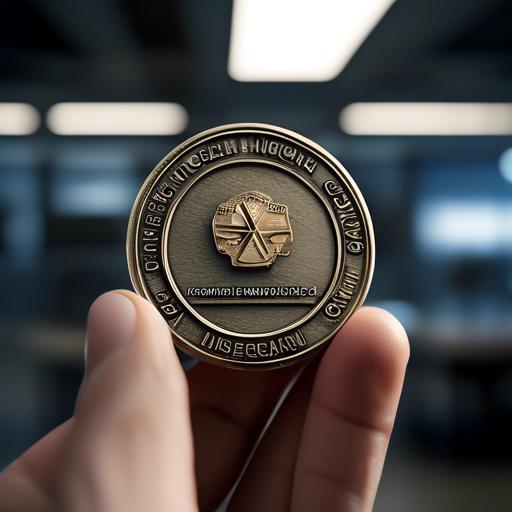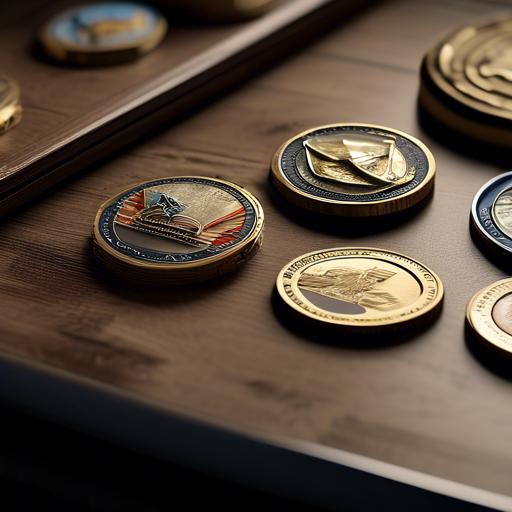In the world of military tradition and camaraderie, the challenge coin holds a critically important place of importance. These small tokens of recognition have a rich history behind them, dating back to World War I. However, many may find themselves wondering why exactly they are referred to as “challenge coins.” Join us as we delve into the origins and importance of these cherished mementos in our exploration of why they are called challenge coins.
The History Behind the Name “Challenge Coin
Challenge coins have a rich history that dates back to World War I. The tradition of carrying a special coin as a symbol of camaraderie and pride among military personnel has evolved over the years. The name “challenge coin” is said to have originated from a unique practice that involved using the coin in a kind game of “challenge.”
In this game, members of a military unit would challenge each other to produce their coin at any given time. If a service member couldn’t present their coin when challenged, they would be required to buy a round of drinks for the group. The challenge coin not only served as a symbol of membership and identity but also as a way to foster unity and camaraderie among military personnel. To this day, challenge coins are still a cherished tradition in the military and are often used as a way to honor service and recognise achievement.
Significance of the Term “Challenge” in Challenge Coins
In the world of challenge coins, the term “challenge” holds a significant meaning that goes beyond its literal definition. These coins are not just ordinary tokens; they are symbolic representations of camaraderie, honor, and tradition.The challenge aspect comes into play when a member of a specific group or institution presents their coin as a way to test the loyalty and solidarity of their fellow members.
The term “challenge” in challenge coins also refers to the time-honored tradition of coin checking. This practice involves members of a group challenging each other to produce their coin at any given time. If a member is unable to present their coin, they are typically required to buy a round of drinks for the group.This tradition adds an element of fun and camaraderie to the possession of challenge coins, reinforcing the strong bonds between individuals within the organization.
Connection Between the Military Origins and Modern-Day challenge Coins
The connection between military origins and modern-day challenge coins can be traced back to the early 20th century when these coins were frist used by American soldiers during World War I. These coins were originally given as a symbol of camaraderie and to boost morale among troops. Over time, the tradition of challenge coins has evolved and spread to various branches of the military, law enforcement agencies, and even civilian organizations.
One of the most captivating aspects of challenge coins is the practice of “coin check” or “challenge.” This tradition stems from the military roots of challenge coins and involves a member of a group initiating a challenge by slamming their coin on a table or bar. If the challenged individuals cannot produce their coin, they are required to buy a round of drinks. This practice has become a fun and lighthearted way for individuals to showcase their affiliation with a particular group or organization.
Recommendations for Creating Custom Challenge Coins with Meaning
One crucial aspect to consider when creating custom challenge coins with meaning is to focus on the design. The design of the challenge coin should be carefully crafted to reflect the message or significance behind it. Whether it’s for a military unit, a law enforcement agency, or a corporate team, the design should incorporate relevant symbols, logos, or mottos that hold significance to the group. This will not only make the challenge coin visually appealing but also provide a deeper sense of meaning and connection to those who receive it.
In addition to the design, another suggestion for creating custom challenge coins with meaning is to personalize them. Adding personalized touches such as initials, dates, or special messages can make the challenge coin more unique and special to the recipient. This personalization can enhance the sentimental value of the coin and make it a cherished keepsake for years to come. By incorporating meaningful elements into the design and adding personal touches, custom challenge coins can become powerful symbols of unity, pride, and camaraderie within a group.
Q&A
Q: Why is it called a challenge coin?
A: The term “challenge coin” is believed to have originated from military traditions dating back to world War I.
Q: What is the history behind challenge coins?
A: Challenge coins were used as a way for military units to identify themselves and boost morale among members.
Q: How are challenge coins earned?
A: Challenge coins are typically earned through acts of courage,accomplishment,or dedication within a unit or organization.
Q: Are challenge coins only used in the military?
A: While challenge coins have a strong association with the military, they are also used in other organizations as a symbol of pride and camaraderie.
Q: How are challenge coins used today?
A: Challenge coins are often carried by members of a particular group and presented as a token of recognition or as a way to commemorate special events or achievements.
Wrapping Up
the origins of the challenge coin may remain shrouded in mystery, but its significance and tradition continue to thrive among various organizations and individuals worldwide. Whether it be as a symbol of camaraderie, a mark of achievement, or a token of recognition, the challenge coin holds a unique place in the hearts of those who carry it. As we reflect on the history and meaning behind the challenge coin, let us remember its importance in fostering unity, loyalty, and pride within our communities. Thank you for joining us in exploring the fascinating world of challenge coins. stay tuned for more articles on intriguing topics in the future.


